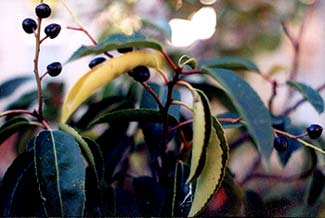|
|
本帖最后由 Test 于 2013-6-18 16:33 编辑
葡萄牙桂樱,正式的学名是Prunus lusitanica,常常做为围栏植物。
Portugal Laurel is actually a cherry, not a true laurel. Unlike other cherries it is evergreen in the manner of laurel, & the leaves though shaped perfectly like plum leaves are tough & leathery also in the manner of laurels. Portugal Laurels additionally do not bloom until after new young leaves form in spring (among the previous year's unfallen leaves), whereas most plums & cherries bloom before leafing. Being so laurel-like in all these qualities, it has long been dubbed a laurel.
Portugal Laurels are frequently hedged or pruned for stunted growth to eight feet tall, but that is a terrible abuse of a potentially gorgeous tree. It wants to grow to 25 feet of height, & at least as wide. In the wild they can reach 50 feet, but cultivated specimens scarsely ever reach 30 feet.
When hedged they rarely fruit or flower, but permitted to grow into a respectable cherry tree, they will have a profusion of gorgeous five to ten inch racemes.
The small black cherries resemble choke cherry fruits & just like choke cherries are inaccurately regarded as toxic, or have been mistaken for toxic because true laurels are toxic. Portugal Laurels in fact produce edible berries, though to say they are not very flavorful unless cooked is understatement.
I tried to eat exactly one small cherry after it was newly ripened to black, & it tasted positively hideous. I spat & spat then ran in the house to gargle & rinse the horrid flavor out of my mouth. But if they are cooked & seived & sweetened for jelly or syrup, they would be as good as any bitter fruit can be.
Probably even the seeds are no longer toxic when the fruit is fully ripened, but to be on the side of caution the fruit should not be harvested until completely ripened to full blackness (by October) then should be cooked with the seeds carefully strained out.
Few people bother to harvest Portugal laurel cherries, which are left on the branches as bird-attractants in autumn & winter. The cherries are not eaten by birds until fully ripened. Because the leaves as well as the unripe seeds do contain cyanide, leaves should not be burned, or will release toxins to the atmosphere.
Originating in Spain & Portugal (its species name is an old name for Portugal), this tree has been gardened in England since the Elizabethan Age, long enough for it to have invaded some woodland areas to the detriment of native species. It has medicinal value, an extract of P. lusitanica having been used as bacteriocide & fungicide.
 Portugal Laurel, Portugal Laurel,
aka Portuguese Cherry Laurel,
aka Evergreen Bay-Tree,
aka Portugal Cypress
"He that planteth a tree is a servant of God."-Henry van Dyke
(1852-1933)
Paghat the Ratgirl |
本帖子中包含更多资源
您需要 登录 才可以下载或查看,没有账号?注册

×
|